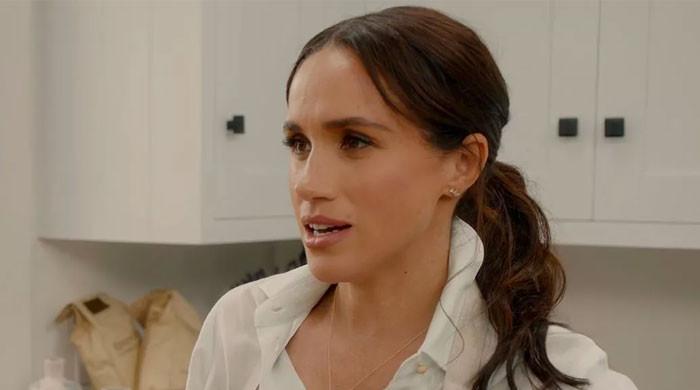This story appears in the May/June 2025 issue of ESSENCE, on newsstands April 24. I’m feeling hopeful,” Brandan “BMike” Odums tells me during our brief but impactful phone call—38 minutes and 45 seconds, to be exact. His optimism threads throughout our conversation—and though I don’t have roots in New Orleans, or in his particular area of the creative arts, I can’t help but relate.
I immediately feel hopeful too. “I think art has the ability to help us see further down the road than what’s in front of us,” Odums reflects. “That has been a true ink stain of where I am right now—just thinking about how because of art, I can imagine alternatives to the present.

” This concept of “imagining alternatives” touches everything in Odums’s expansive body of work. If you’ve ever been to New Orleans, you’ve heard talk of an artist known as “BMike”; he and his work have become almost synonymous with the city itself. And for good reason.
Over the past decade, he has transformed himself from an underground street artist to one of the most consequential voices on the New Orleans art scene. Those massive murals you may have seen, wondering who was behind them? Yup, that’s him. His work celebrates Black historical figures, as well as important moments in the African-American story that are often overlooked in mainstream narratives.
He manages to provide a breath of fresh air even as he offers stark reminders of the past, giving context in today’s tumultuous times. When I ask him to describe his beloved city in just three words, Odums pauses thoughtfully. “Palimpsest.
Alchemy. Community,” he says finally. He breaks down what he means by palimpsest —which, even though I am a logophile, sent me straight to Google.
For those who also searched: It’s a manuscript, or some other material, that has been written over repeatedly while still retaining traces of its earlier form. Odums’s response sounds as though he knew the question was coming. “Everywhere you step in New Orleans, there are layers of many things,” he explains.
His second word, alchemy , speaks to how the city transforms negatives into positives. “There are a lot of reasons why one would be critical of living in New Orleans, but we’re alchemists, and we transform those things into joy, into beauty,” he says. But it’s the third word, community , that animates much of BMike’s artistic philosophy.
Because really, what is art without community? “New Orleans is a small city, a small town, and everybody’s connected in some weird way,” he says. “We create with the purpose of bringing people together.” That emphasis on community began early in Odums’s journey.
Growing up in New Orleans, he was naturally drawn to art, though he initially pursued filmmaking in college. “I would draw in class, and everyone would be like, ‘Oh, you’re going to be an artist,’ ” he recalls. “So I just took that identity, since I was young.
” Like many others, Odums confronted some twists and turns in post-Katrina New Orleans, and he faced some critical decisions. Back then, when he was shooting music videos, he found himself gravitating to locations that featured street art and graffiti. This sparked a curiosity that led him to try painting walls himself—initially illegally.
His work depicted historical figures and messages that hit home with local communities. But beauty comes when we least expect it—even when it’s messy, shocking, gut-wrenching. What started as unauthorized paintings evolved into the strikingly honest Project BE, a series of murals in the abandoned Florida Housing Project that captured the public imagination.
This led to Exhibit BE, for which Odums and a team of volunteers organized other artists to transform another vacant space. Both projects laid the groundwork for Studio BE, which was originally intended as a six-month pop-up—but which has turned into an enduring cultural landmark. “I didn’t anticipate ever being where I am now,” Odums admits.
“But the building blocks were always there.” I’ve often wondered how artists navigate the tension between artistic integrity and paying the bills; the two demands are so often in conflict. So, of course, I ask.
Odums’s answer is rooted in what one of his mentors called “survival technology”: creating art as a means of personal and community survival, rather than for commercial gain. “New Orleans is a place where it’s not easy to find significant commercial success as an artist,” he says. “What that taught me was the importance of asking, why do you create, outside of commercial success? Some of my favorite people, some of the most talented people I know, never make it to these high levels of commercial success.
But you still see them create.” Odums credits these artists with teaching him a different set of values altogether. “When you think about the ‘usefulness’ of art,” he says, “you realize that it’s way more useful for community than it is for you to transact—to be rich or famous.
” This philosophy now guides the nonprofit organization he founded, Eternal Seeds, which has formalized his years of organic community engagement. Through summer programs and year-round art initiatives, the organization supports more than 60 artists, ranging in age from 15 to 50. I’m still trying to wrap my head around how he does it all.
“That’s where all the work is,” Odums says. “I’m depositing a lot of my time, resources, energy into that, in hopes that it keeps going long after I’m here.” When it comes to stories that need more attention, Odums mentions the Louisiana chapter of the Black Panther Party—a group of teenagers and young adults who established an office across from the Desire Projects in 1970.
Despite facing brutal police violence when 250 NOPD officers shot into their office for 32 minutes, all members survived and continued their community work. “These were folks who decided to do something about the issues they saw,” Odums says. “They united to organize and to create change.
” In this digital age, when activism often happens online, BMike remains committed to the power of physical, large-scale public art. “Painting a mural in a public space is like hacking a system,” he explains. “You get in your car, you go from point A to point B, and sometimes you can just disappear.
But then, all of a sudden, there’s a mural on the wall.” And that public art, he says, reminds you that you belong to something. These are some of the lessons learned, as an artist and businessman, that have shaped the journey for Odums—who sees himself “at best as a choir,” sharing the gospel of community survival through his art.
.
Entertainment

A Revolution On Canvas

This story appears in the May/June 2025 issue of ESSENCE, on newsstands April 24. I’m feeling hopeful,” Brandan “BMike” Odums tells me during our brief but impactful phone call—38 minutes [...]The post A Revolution On Canvas appeared first on Essence.














